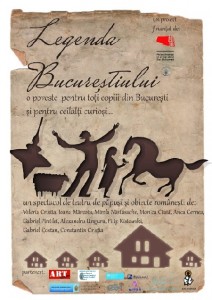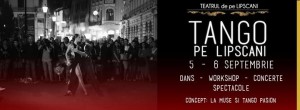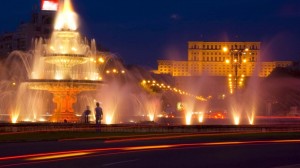
Gawk Until You Drop at the Palace of Parliament
The world’s biggest parliamentary building (and one of the largest buildings of any kind) happens to be in Bucharest. Whether one views the gargantuan Palace of Parliament as a folly and testament to the megalomania of former dictator Nicolae Ceaușescu or a display of Romanian materials and engineering skill (arguably both), it’s a must-visit. Hour-long guided tours manage to take in just a fraction of the building’s three-million-plus square feet (there are more than a thousand rooms) and focus on the tons of marble, hardwood, and gold used in the building’s construction in the 1980s, a time when Romania was straining to feed its own people. Ceaușescu and his wife, Elena, both played a direct role in the construction. It was originally intended to house the presidential offices and the Central Committee of the Romanian Communist Party but was never finished.
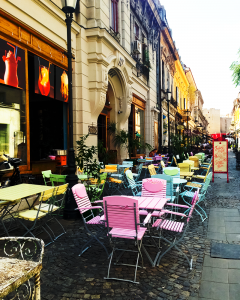
Glimpse a Piece of Old ‘Paris’
Even the city’s most ardent fans don’t quite maintain the old saw, the “Paris of the east.” That was Bucharest’s nickname in the decades before World War II, when the art nouveau palaces and architecture really were reminiscent of Paris. Decades of communist misrule and a tragic earthquake in 1977 brought much of the old city down, but there are places here and there where that former elegance can still be glimpsed. The Cișmigiu Gardens in the center of the city is a pearl of park built around a romantic lake and featuring old-growth trees and gracious, wrought-iron signposts and benches. North of the center, broad avenues like Şoseaua Kiseleff glide past old villas and acres of green to a commanding replica of the Arc de Triomphe—a genuine homage to Paris—and another elegant city park built around a lake: Herăstrău Park.
Feast on Stuffed Cabbage Rolls and Cornmeal Porridge
Romanian food is not as well known outside the country as it deserves to be. The best dishes—based on time-tested traditional recipes and using locally sourced, often organic ingredients—are satisfying in a grandmotherly way. The unofficial national dish is sarmale, cabbage rolls stuffed with spiced minced pork and beef, but there are many similar concoctions. Main courses are often paired with mămăligă, cornmeal porridge (think polenta) topped with sour cream or grated sheep’s cheese. The cabbage rolls at Caru’ cu Bere, a traditional beerhouse in the center, are as good as the homemade variety. The cooks at Lacrimi si Sfinti have given traditional mains like veal and pork a modern makeover, spicing up old recipes with hints of citrus and coriander. One street snack worth looking out for is covrigi, a soft pretzel topped with salt or poppy seeds and served too hot to handle from the oven.
Learn Something of Romania’s Roots
Walking Bucharest’s busy boulevards, it’s easy to forget that outside the capital and a handful of large cities, Romania is a largely agrarian country, with a long and rich peasant tradition. For centuries, peasant communities—cut off from the world by impassable mountains or languishing under Turkish, Hungarian, or Austrian rule—were forced to eek out an existence with what they had. The quirky Museum of the Romanian Peasant shows off the elaborate woodworking, pottery-making, egg-painting, and weaving skills of the peasantry in a way that’s both educational and amusing. Small tongue-in-cheek signs at the entrance to each room poke fun at modern life, bring a chuckle, and draw you in. Downstairs there’s a side exhibition on the Communists’ efforts to nationalize the peasantry in the 1970s and ’80s, with some jarring busts of Lenin. At the back, there’s a big shop in which to buy authentic souvenirs to take home.
Pay Your Respects to Vlad the Impaler
Admittedly, Bucharest’s ties to Vlad Țepeș, the real-life, bloodthirsty prince who served as the inspiration for Bram Stoker’s Dracula, are tenuous. After all, Bucharest was just beginning its rise as an important city in the 15th century, when Vlad III (of Impaler fame) was defending the fledgling principality of Wallachia from Ottoman incursions. Thanks to Stoker, Dracula is more commonly associated with the region of Transylvania (though he didn’t spend much time there either, apparently). However, just 25 miles (40 kilometers) north of Bucharest, an isolated island monastery in the middle of Lake Snagov houses the prince’s purported final resting place. As with all Dracula stories, Vlad’s death and burial are shrouded in mystery. Even if it turns out he’s not buried here, lovely Snagov makes for an ideal outing. Regular minibuses make the 40-minute trip throughout the day from Piața Presei Libere, north of the center. Once in Snagov town, hire a boat for the final leg out to the monastery.
Indulge in 21st-Century Art
Romania has exploded onto the contemporary art scene in recent years. The excitement was generated initially by a group of young painters and visual artists from the northern city of Cluj-Napoca, but at least some of the action has shifted to the capital as new galleries and design centers open up. It’s hard to pinpoint precisely what constitutes Romanian contemporary art, though critics point to shared elements of wit and dark humor, a somber mood, and bits of surrealism in defining a common style. Some of the best new galleries for experiencing the excitement include the Zorzini Gallery, the H’art Gallery, and Anaid. The Galateca gallery, across from the National Museum of Art, specializes in cutting-edge design and hosts art events and happenings. Stop by the gallery’s shop, Neogalateca, to see some envelope-pushing design in glassware and home furnishings (including a fetching coat rack carved from a tree trunk).
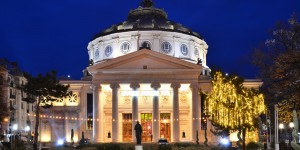
Find Your Garden of Eden
Part of the pleasure of strolling through the city’s dense urban fabric is discovering hidden pockets of green between the buildings and hearing the buzz of conversation beneath the trees. In recent years, outdoor cafes and drinking gardens have sprung up all around town to take advantage of Bucharest’s hot summer nights, when, frankly, no one wants to sit indoors. The Cărtureşti bookstore may have ignited the trend with its sprawling Verona Garden at the back. The OAR Garden, next door, offers more privacy and the possibility of live jazz or acoustic guitar on some evenings. Not far away, tucked behind the derelict Palatul Știrbei (Știrbei Palace), is the lush Eden Garden. Buy a bottle of rosé at the bar and find a shaded table.
Visit the City’s Hidden, Historic Churches
Romanitra is deeply Eastern Orthodox, but the real beauty of Bucharest’s ecclesiastical architecture is not found in big cathedrals. Rather, it’s the tiny churches and chapels—usually squeezed into impossibly small corners—that surprise and delight. Many date from the 17th and 18th centuries and fuse elements of Byzantine, Greek, Ottoman, and Renaissance styles. The churches share common elements that include impossibly high steeples built over tiny floor plans, elaborate frescoes, and signature details such as raised pillars and stone balustrades. The Stavropoleos Church in the Old City is an excellent example, with its rich wall paintings and finely carved doors. Other churches to look for include St. Apostles’ Church, Antim Church, and the hard-to-find-but-worth-the-effort Doamnei Church, biding time in the back lot of a Pizza Hut.
Drink and Dance Through the Old City
Bucharest’s historic core, the Old City, has gotten a much needed makeover and, these days, is anything but “old.” What was once the stomping ground of the Princely Court in the 15th century and later the center of traditional trades such as horseshoeing and metalworking has been transformed into the go-to district for bars, clubs, and cafés. Here, tiny lanes like Strada Smârdan or Strada Covaci heave with partiers moving from meals to drinks to dancing as the night wears on. For drinks, try Bicicleta, where the furnishings have been fashioned from old bicycles. For clubbing, mainstream stalwarts like La Muse and Mojo, both in the heart of the Old City, are dependable all-night DJ danceathons. Biutiful, not far away, offers high-concept industrial design with higher prices to match.
See Where Modern History Was MadeA quarter century ago, former communist dictator Nicolae Ceaușescu and his wife, Elena, were toppled following a dramatic, weeklong uprising across the country that cost more than a thousand lives. It was a pivotal moment in Romania’s historic transition to democracy. Some of the bloodiest fighting took place on or near today’s Piața Revoluției (Revolution Square), and on closer inspection some buildings still bear pockmarks from the bullets. At the center of the square, the spiky Memorial of Rebirth is meant to honor those who died and to symbolize the country’s rebirth. Just across the square stands the former Central Committee building of the Romanian Communist Party. From the balcony on the front of the building (still visible), Ceaușescu gave his last, ill-fated address to the nation on December 21, 1989, before fleeing from the roof in a helicopter. He and his wife were soon captured and were executed four days later.
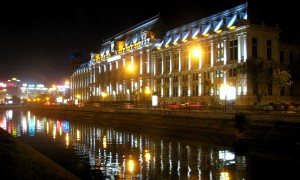
Enjoy! and Stay connected! 😀
Surse: National Geographic
www.eastcomfort.com


